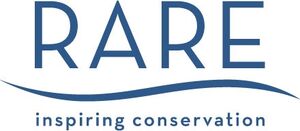Threat Reduction Yellow Pages[]

Welcome to the Threat Reduction Yellow Pages Wiki. This site aims to be a central repository of threat reduction methods, a site whose very existence spurs innovation and dissemination of proven approaches to biodiversity conservation.
Rare, a U.S.-based conservation nonprofit, works globally to equip people in the world's most threatened natural areas with the tools and motivations they need to care for their natural resources. Recognizing that for every problem there is a probable solution, Rare is seeking the conservation community’s help.
On behalf of the tens of thousands of local conservationists working around the world, Rare aims to develop a registry of solutions to some of the field's toughest challenges -- a sort of “Yellow Pages” for threat reduction. If a household needs a plumber, the homeowner pulls the Yellow Pages from the shelf and thumbs through a list of local plumbers in the area, complete with contact information and areas of specialization. The premise is that like the homeowner, a conservation practitioner working to identify alternatives to, let's say, excessive fuelwood gathering, would benefit greatly from a list of practical solutions – such as solar ovens, bio-gas stoves, or community woodlots -- as well as an understanding of where these approaches have been tested, how others rate their utility for threat mitigation, what they might cost to replicate, and where and how to learn more. Through this Wiki, Rare aims to make this kind of information more readily available. And if possible, Rare will encourage users to "rate" the usefulness of ideas they've taken from the site.
To organize the site, Rare adopted the threat nomenclature of the Conservation Measures Partnership (CMP)and began to populate both the taxonomy of CMP's threats to biodiversity, as well as the many potential ways of reducing those threats. Much of the initial detailed information in these sections is taken from other sources. The framework is just the beginning. Rare assumes the conservation community will build out this site over time in order to share proven methods and access others' experience. It is our hope that practitioners with an expertise or interest in a specific "threat" or "solution" will take "ownership" of that category and manage it accordingly. Anyone willing to do so should please notify the community.
For suggestions on formatting and the kinds of information the founding authors believe will be useful for describing, please see "Tourism & Recreation Areas" in the Conservation Threats section below. For suggestions on how to document and describe threat reduction tools, please see "Solar Stoves" in the Threat Reduction Tools section below. We welcome your changes! It's a Wiki!
Note that the conservation threats listed, and their associated definitions, are provided via 'The Conservation Measures Partnership' (CMP). This site will be shared with both CMP and IUCN. For further information on CMP, please visit http://fosonline.org/CMP/
Conservation Threats[]Residential & Commercial Development:
|
Threat Reduction Tools[]Residential & Commercial Development:
|